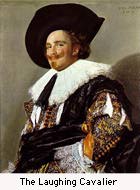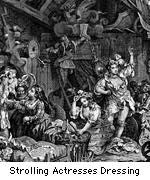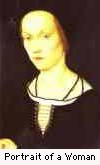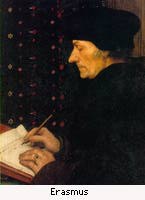|
Hals, Frans c.1582-1666 Dutch painter, considered one of the greatest portrait artists of the 17th century.
Frans Hals left no written evidence about his life or his works, and only a brief outline of his biography is known. Except for a brief visit to Antwerp in 1616, Hals lived all his life in Haarlem, where he became the great 17th-century portraitist of the Dutch bourgeoisie. He painted with increasing freedom as he grew older, and it is in the paintings of his old age that his genius for portraying human character is fully revealed. Hals evolved a technique that was close to impressionism in its looseness, and he influenced Edouard Manet with his free style and Vincent van Gogh with his subtle range of colours.
www link :
Hogarth, born in London, apprenticed as a plate engraver. His first success as a painter was in the 'conversational pieces', in which informal groups of friends are surrounded by customary things from their everyday life. Hogarth was the first to paint themes from Shakespeare, Milton and the theater. The scene from 'The Beggar's Opera', the picture of an actual stage, brought him great success. The result of this accomplishment was the idea of his own 'theater': the creation of 'pictorial dramas'.
The first series 'The Harlot's Progress', was followed by One of the masterpieces of the world is Hogarth' The Shrimp Girl
www link :
Except that he was born in Augsburg little is known of Holbein's early life.
The elder Holbein was a pioneer and leader in the transformation of German art. He was one of the first to paint a Renaissance type of background, and to use architectural decoration in his pictures. A man of imagination and power, possessing a splendid capacity for depicting character he has long been overshadowed by the fame of his son.
Born in Augsburg, Holbein the Younger went as young man to Basle, Switzerland.
By 1521 he was executing important mural decorations in the Great Council Chamber of Basle's town hall. The artist's most famous work in this area, was a series of 41 scenes illustrating the medieval allegorical concept of the 'Dance of Death'.
In 1526 Holbein went to England. It is the artist's record of the court of King Henry VIII of England, as well as the taste that he virtually imposed upon that court, that was his most remarkable achievement. Holbein was one of the greatest portraitists and most exquisite draftsmen of all time, renowned for the precise rendering of his drawings and the compelling realism of his portraits.
www link :
|



